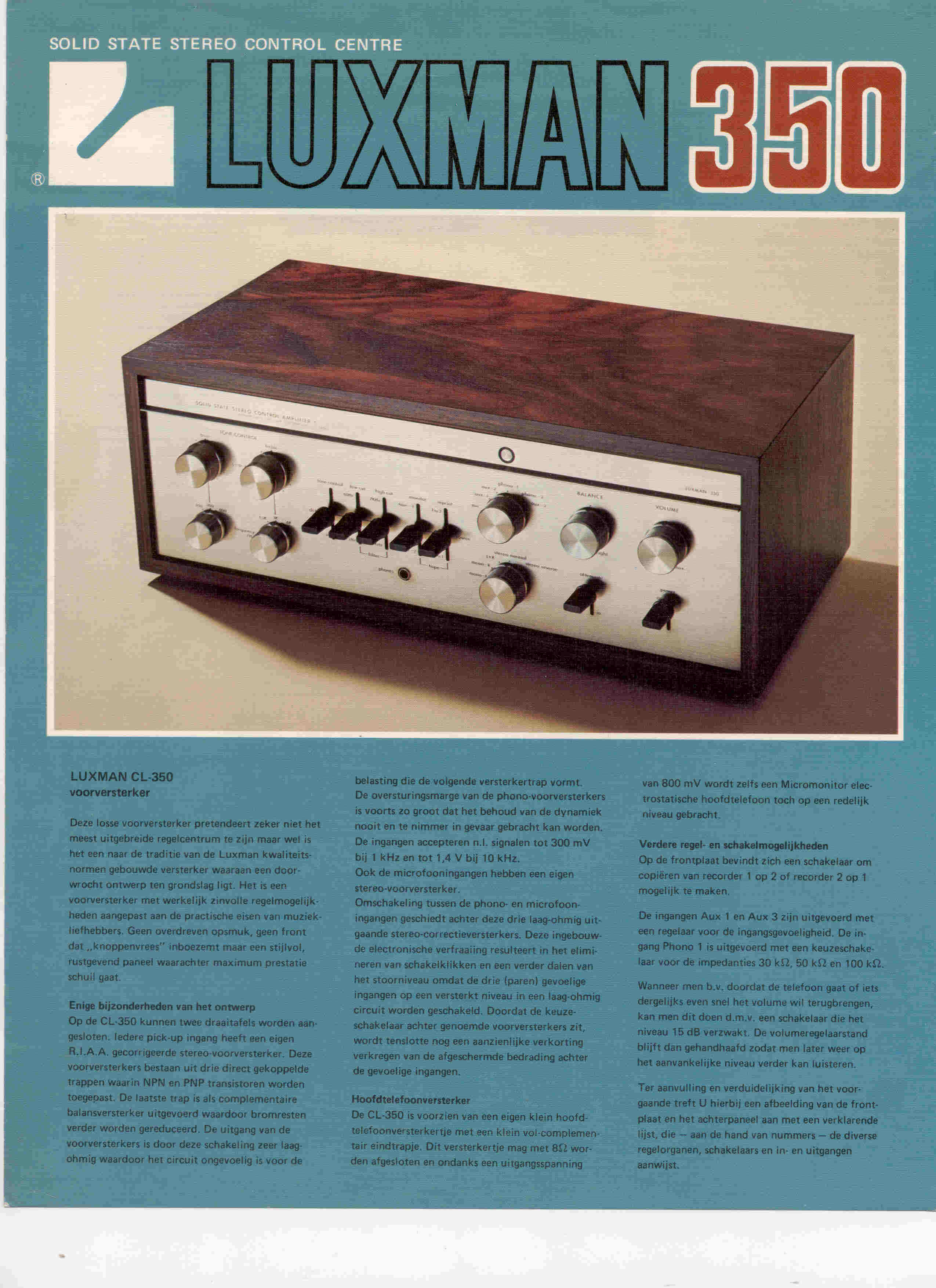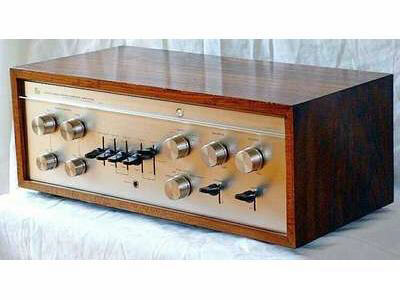|
LUXMAN
vintage
audio |
|
LUXMAN
vintage
audio |
Luxman CL-350 control amplifier

General:
This pre-amplifier or control amplifier as Luxman decided to call it was built during the late 70’s. It was designed to match the M150 power amplifier and the similarly styled T-300 tuner. Its main features were the elaborate tone controls and its ability to connect to a variety of equipment, even two step up transformers for phono. The specifications are good and the performance is very good. What you got for the money was a well-built piece of equipment.
Special futures:
Compared to modern equipment the CL350 has a couple of advantages that makes it quite unique. The amplifier has a very interesting back panel owing to the number of RCA connectors available. It supports two record players, three auxiliary inputs, two tape monitor sets, one microphone input and two sets of output terminals and even two sockets for step up transformers for phono.
Besides the RCA connectors the amplifier provides a DIN input/output connector for the first tape monitor channel and large jacks for the microphone input.
It is also a very practical instrument to use. There is a tape copy switch that allows copying between the two tape monitor circuits, in both directions, while listening to another input. There is also a "tone defeat" switch that bypasses the tone controls. The tone controls for bass and treble each have three selectable operating frequencies; the three frequencies are one octave apart. It provides 150, 300 and 600 Hz for the bass control and 1.5, 3 and 6 kHz for the treble control. The control knobs are split so they may be set separately for the left and right channels.
The amplifier also provides low and high cut-off frequencies. In an era of rumbling turntables and noisy cassette decks those controls were quite useful indeed.
Perhaps the neatest feature is the contour switch that is located on the top of the amplifier case itself; it is hidden from view by the wooden enclosure. This switch provides 0.6 dB gain, linear mode or 0.6 dB attenuation at 250 Hz. This is a very subtle control to adapt speaker behavior to the acoustical properties of the room.
Schematic:
Click here to download the user/service manual of the Luxman CL350 in PDF.
Solderside of the main PCB & power supply board ^
Modifications:
The CL350 came out of the box with its mains power cord hardwired to the transformer. We lived in a house with noisy mains at that time and the pops and clicks were a nuisance. The power cord fed into the back of the amplifier through a cutout in the form of a standard mains connector. The cutout was blanked with a small piece of metal, with a hole to accommodate the cord. That was replaced with the smallest noise filter available.
During a check-up in 1989 two resistors in the power supply were replaced. That and the power indicator lamp were the only parts that have been replaced so far. The amplifier is in the same state as it left the factory.
Component side of the main board, you can see the many connectors that you can use to connect a variaty of gear to this pre-amp. ^
Sound:
The CL350 is connected to a Quad 405 power amplifier. Some reports note that the 405 sounds dull; well it doesn’t when connected to the CL350. It is a lively combination well suited for classical music (e.g. chamber) at any level, while Pink Floyd requires (a lot) more power.
The small built-in phones amplifier (80 mW) is of good quality and easily drives modern headphones to a high sound level.
PE1MMK & Hans Vlems Netherlands

![]()
![]()
© Hans Hilberink - PE1MMK ® Hans Vlems 2003 - Last update: 21-03-2014.